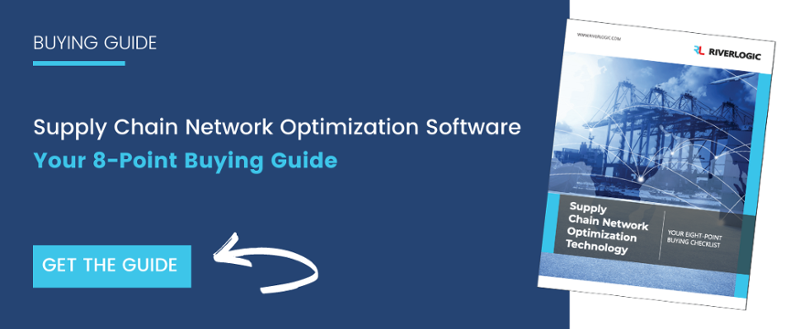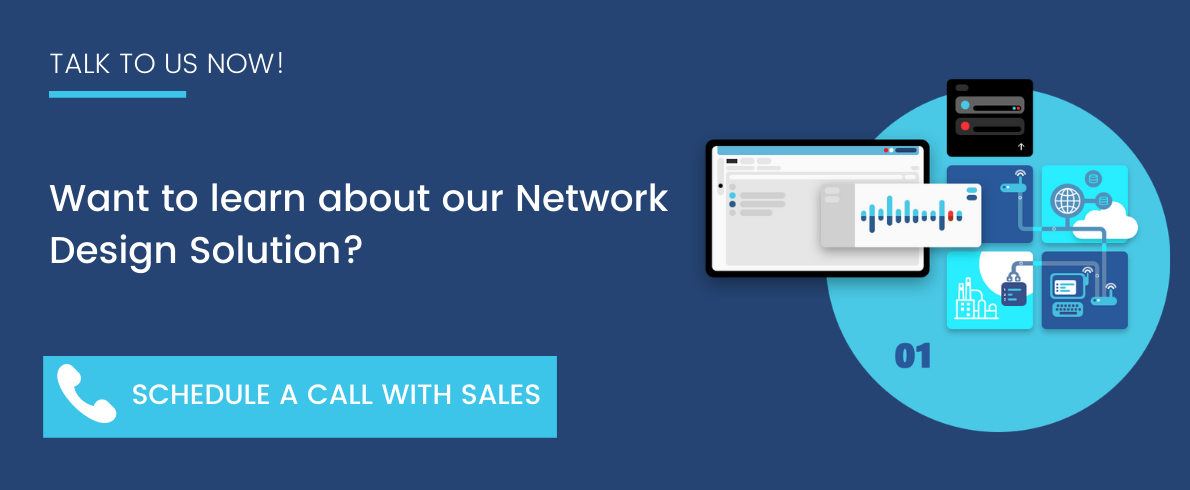A key issue is the need to determine the optimal supply chain strategy for the organization over a 3-to-15-year period considering factors like:
- Future demand
- Product life cycles
- Product obsolescence
- Global and national trends
- Competition
Determining answers to these questions requires in-depth analysis supported by optimization modeling, scenario analysis, and prescriptive analytics. Here are 10 strategic supply chain planning areas to focus on.
Flow Path
Flow path is a term used to define how products flow from suppliers to customers. There are many different permutations, including different routes, direct selling, selling through distributors, and distributing from your own warehouse infrastructure. You can determine the optimal flow path using River Logic's logistics modeling and optimization capability.
Warehouse Location
The number, size, and distribution of warehousing dramatically impacts your ability to get product to end users. Large, centralized warehouses may mean long delivery trips, while small regional ones may have inadequate levels of stock, be expensive, and be unable to respond to a surge in demand. River Logic's optimization capabilities can determine your optimal warehouse configuration.
Manufacturing Footprint
Manufacturing footprint represents the optimal number and location of manufacturing facilities to meet demand at the lowest cost. This process involves analyzing numerous tradeoffs and constraints. Using River Logic's digital twin technology, you can model your existing manufacturing footprint and run alternative scenarios to determine your optimal manufacturing footprint.
Transportation Strategy
Transportation strategy can be defined as determining how product gets from your facility to the customer. It relates to everything that happens outside your walls. Key factors may include determining delivery frequency, minimum shipping order size, fleet size, and how to serve distant customers. Typically, this analysis can be combined with a flow path or warehouse location strategy using the intuitive modeling capabilities of the Enterprise Optimizer to determine an optimal strategy.
Cost-to-Serve
Cost-to-serve is a type of data-driven analysis that calculates the profitability of servicing customers. It helps you understand where you generate the most revenue and identify marginal opportunities. Using River Logic's CTS planner capabilities incorporated in River Logic's S&OP solutions, you can identify the true supplier margin to identify cost savings and profit opportunities.
Mergers and Acquisitions
While mergers and acquisitions can help strengthen businesses, many never realize their full potential. Reasons differ, but an underlying factor is a lack of insight into how the merging companies operate and the best way to streamline combined operations. River Logic's stochastic modeling allows managers to simulate different scenarios and analyze multiple merger and acquisition combinations. This technique helps determine whether a merger or acquisition will benefit the organization and identify ways to maximize merger paybacks.
Procurement and Sourcing
Strategic procurement refers to the process of determining sourcing policies, evaluating alternatives, reducing supply chain risk, and ensuring suppliers' capability to deliver on time and with quality. It's a complex process with myriad alternatives that can only be fully evaluated and optimized with the optimization capabilities built into a prescriptive analytics solution.
Taxes and Duties
Taxes and duties contribute significantly to imported and export landed costs of goods and materials. For example, Brexit has changed how goods exported to Europe and the U.K. are taxed. Tariffs arising from trade wars like those between the U.S. and China further complicate the situation. These result in a fluid situation with frequent and unexpected changes. Prescriptive analytics modeling using Enterprise Optimizer's intuitive dashboard allows you to simulate these changes in advance, evaluate their implications, and adapt supply lines accordingly.
Risk Analysis and Mitigation
Risk analysis and mitigation is the process of identifying potential business risks and developing mitigation policies. It's a crucial component of strategic planning. This process can make the difference between business success or failure. Prescriptive analytics-based risk mitigation studies let you more fully evaluate alternatives and determine the best strategies.
Omnichannel
Omnichannel refers to retailing through multiple channels simultaneously. On the one hand, you need to keep stores stocked with bulk deliveries, while on the other, successfully deliver individual orders to customers anywhere in the country. Combining these divergent activities is difficult and requires the development of innovative supply chain strategies. These could include delivering orders from local stores, setting up regional warehouses, or using third parties to deliver goods. Determining the optimal omnichannel supply chain configuration needs the optimization capabilities of prescriptive analytics.
Bonus 1: Special Focus Area
Long-term financial planning
While not normally a supply chain strategic function, River Logic's built-in financial optimization capability includes the ability to generate accurate profit and loss forecasts, calculate the cost of sales, and other financial forecasts when performing manufacturing footprint, procurement, and other strategic supply chain planning exercises.
Bonus 2: Specific Industrial Focus Areas
Here are four examples of industrial focus areas where River Logic has helped customers leverage strategic supply chain planning through prescriptive analytics optimization modeling.
Pharmaceuticals
The pharmaceutical drug approval process is lengthy and rigorous. River Logic has helped pharmaceutical companies optimize personnel allocation to the different tasks and phases of drug approval, with a particular emphasis on the pros and cons of assigning in-house or external staff.
Aerospace
We've helped aerospace companies optimize their bidding and production strategies. These include profitability analysis, available capacity for bids, and how to optimize production capacity.
Mining
A mining customer uses Enterprise Optimizer for its strategic supply chain planning process. This includes establishing a long-term production plan to maximize the net present value across the mining value chain. Specific benefits include determining which mine should supply what product, optimizing blending capabilities, minimizing work in progress, guiding buy and sell decisions, and allocating capital.
After-market
After-market servicing is an important aspect of marketing, particularly in areas like printer suppliers and auto parts. Encouraging customers to stick with OEM parts and services generates significant long-term revenue. River Logic has helped companies quantify tradeoffs between direct mail-in of parts for repair or replacement versus in-store pickups. We've also helped determine the best choice between repair and remanufacturing defective goods.








